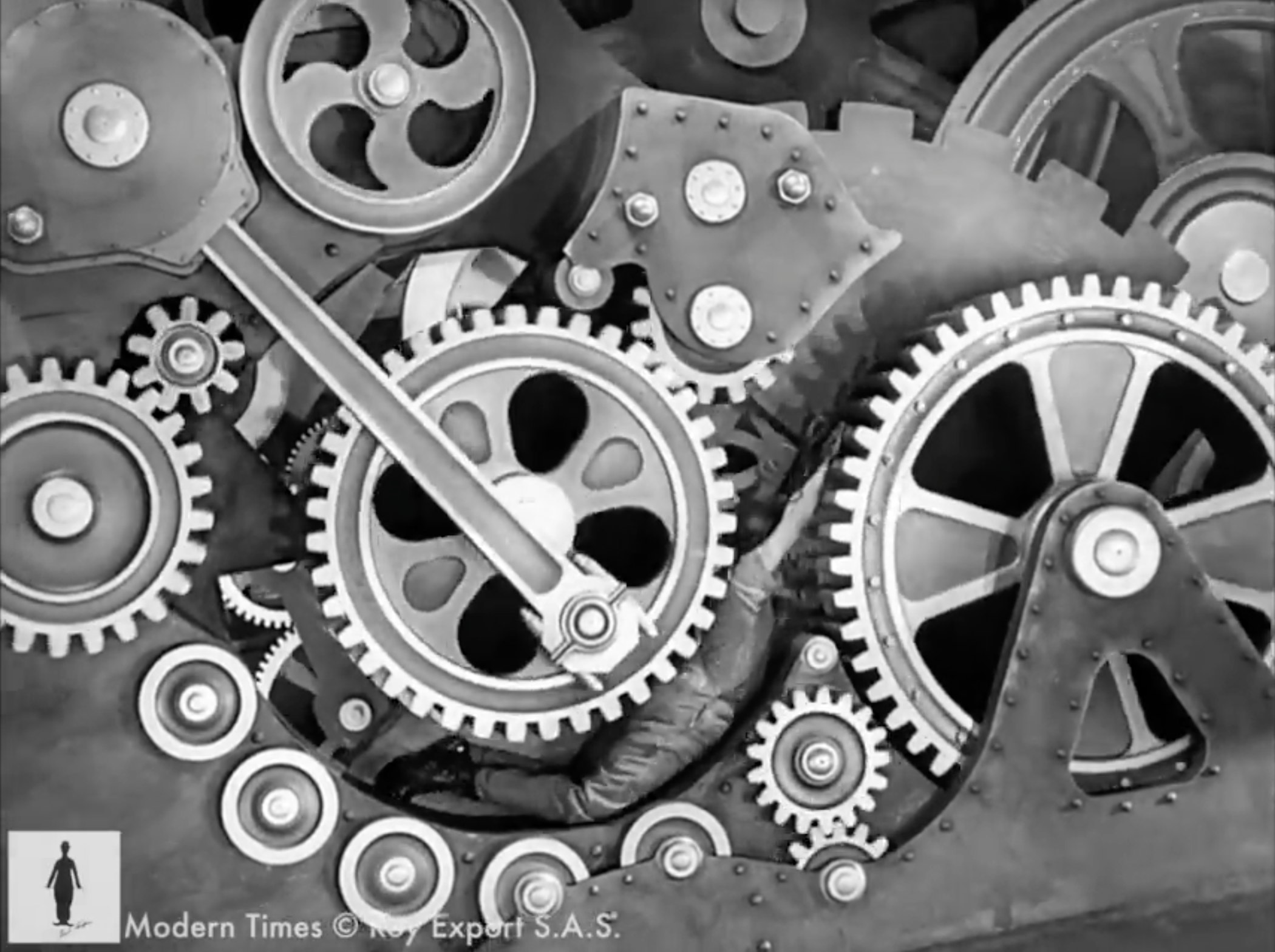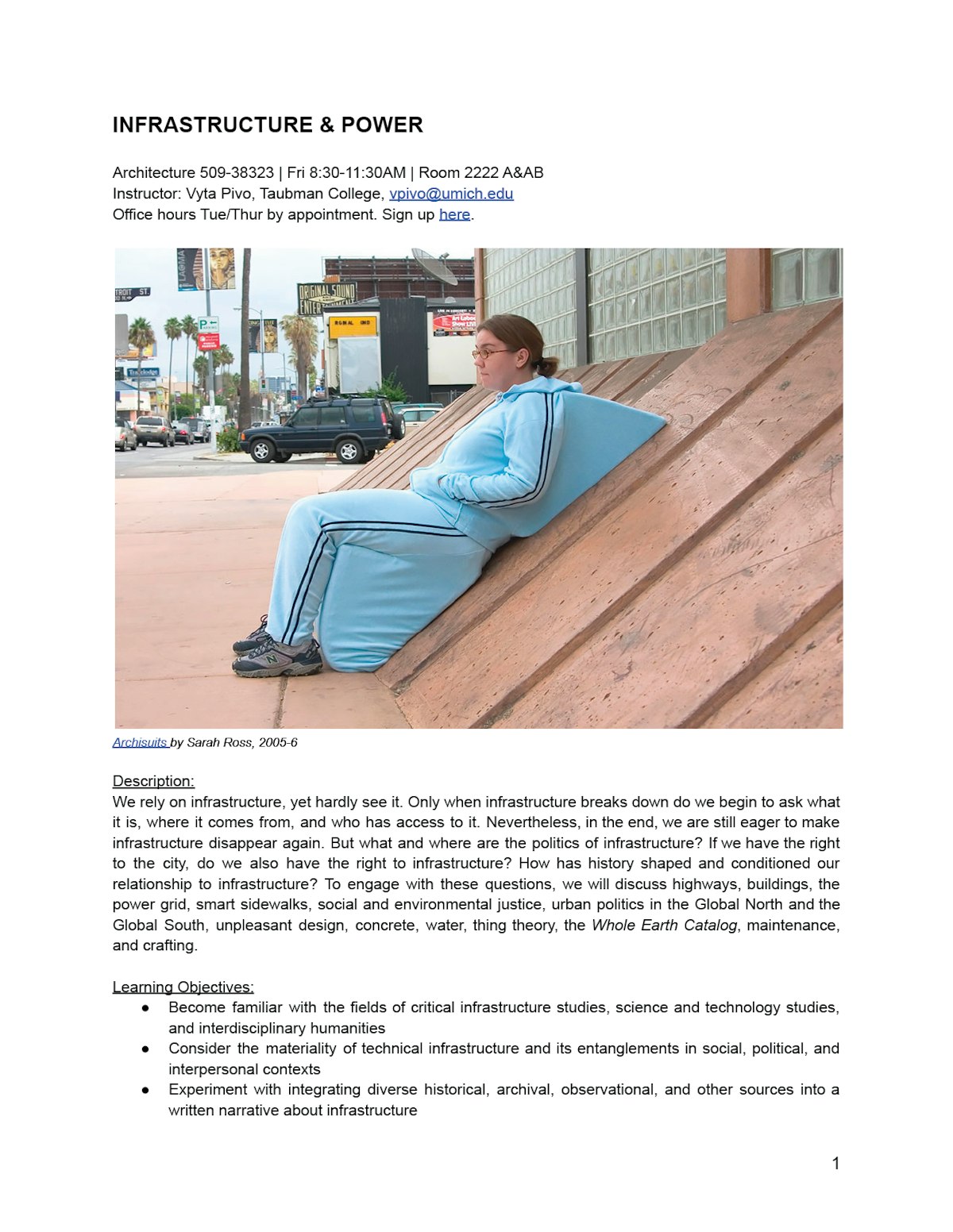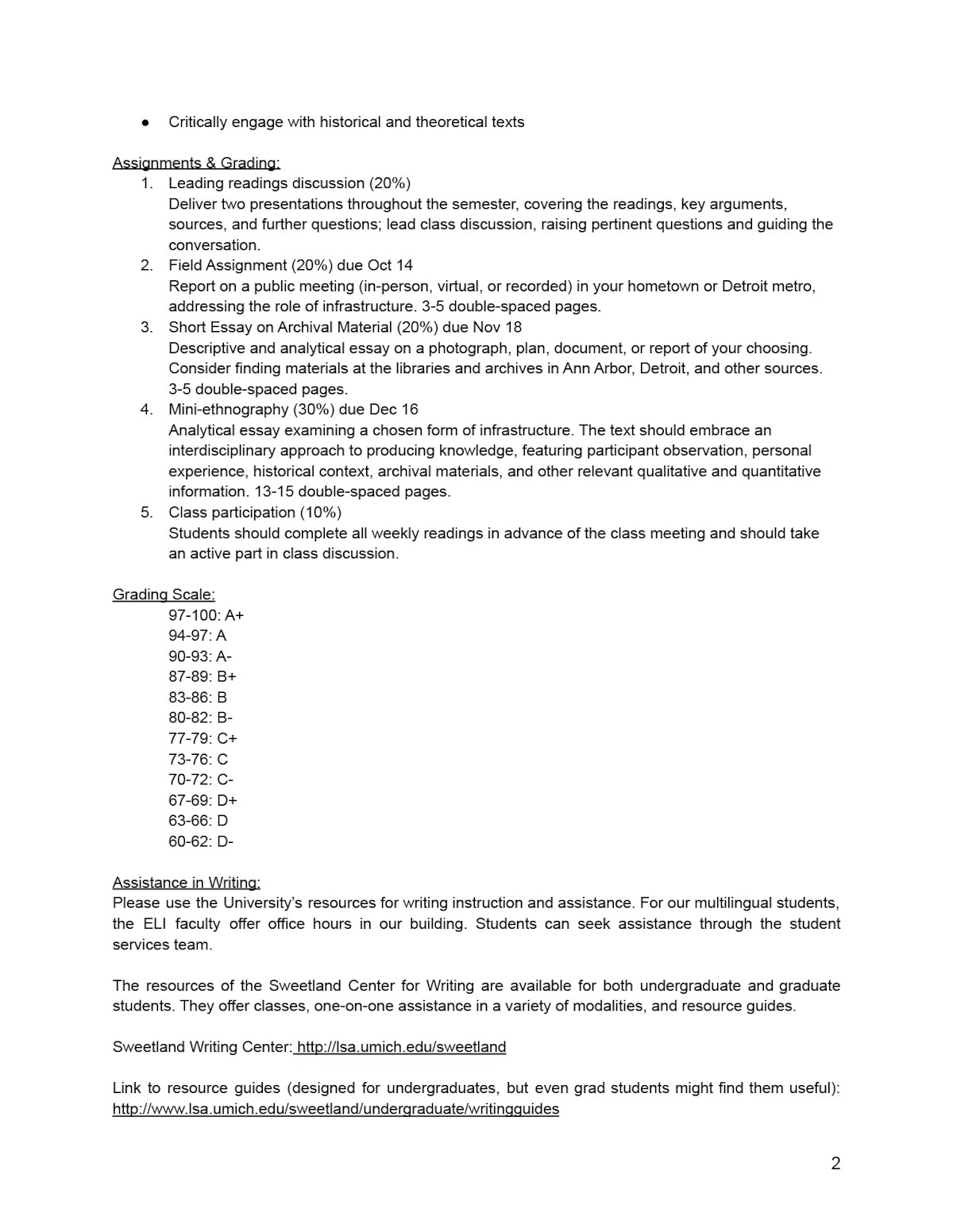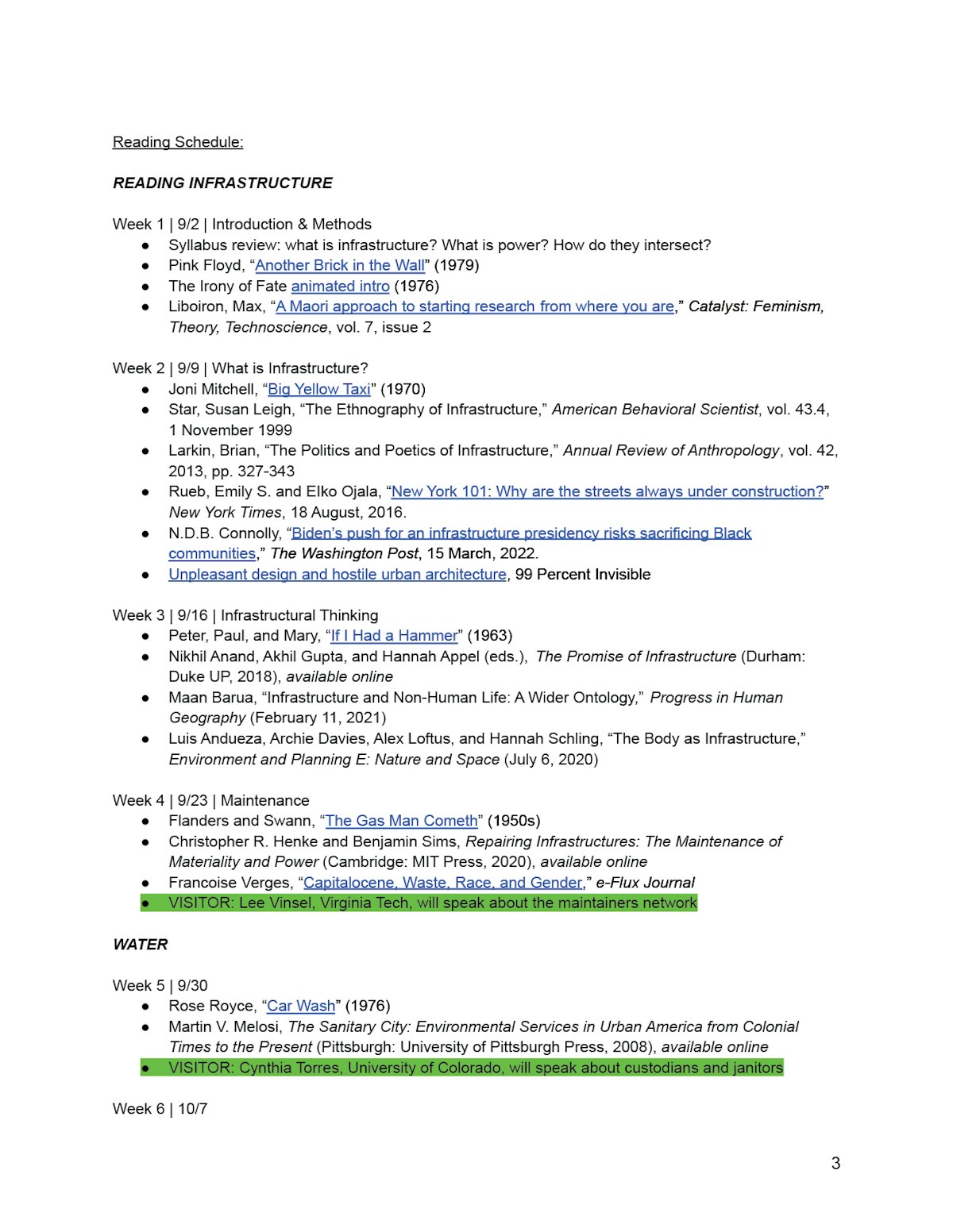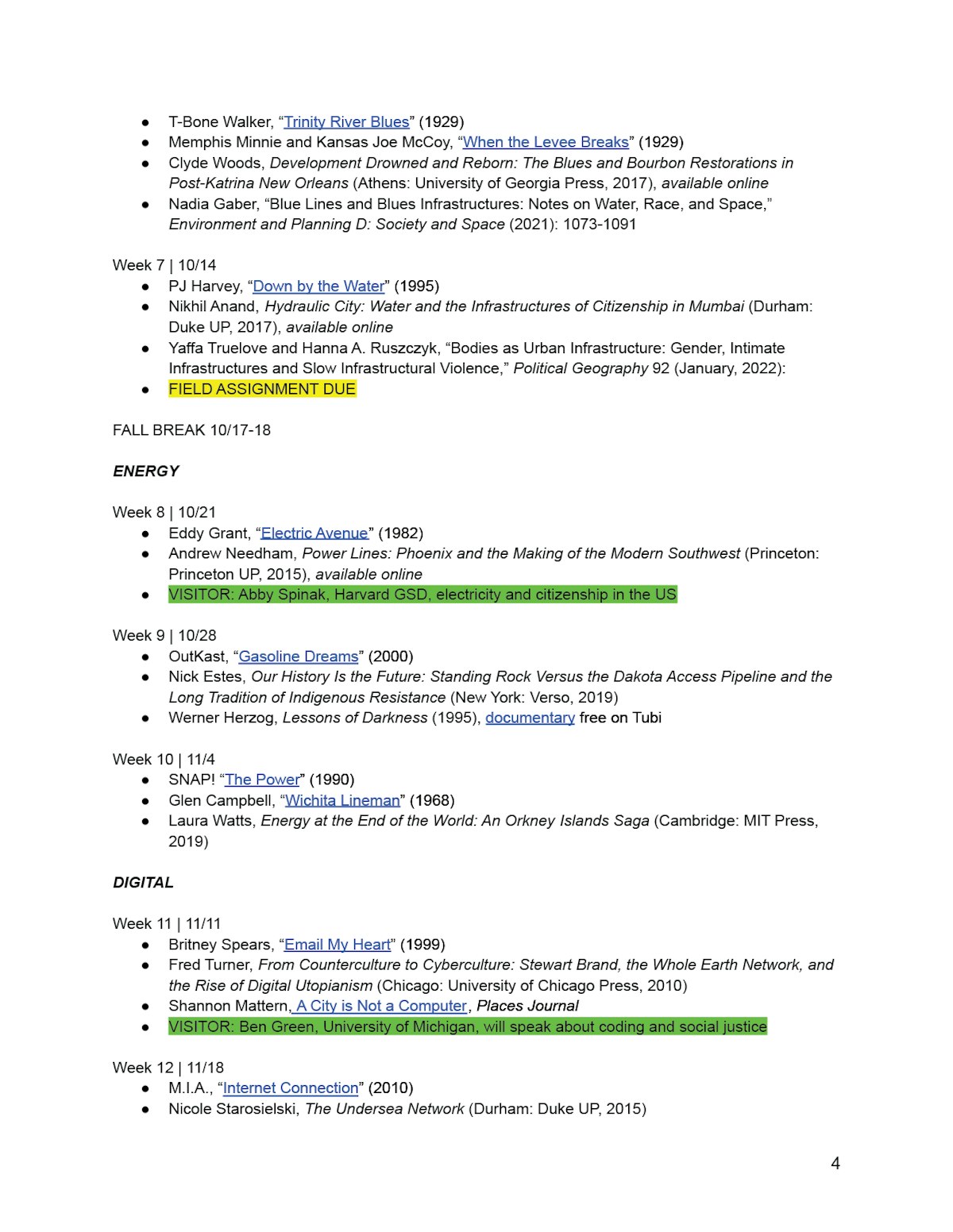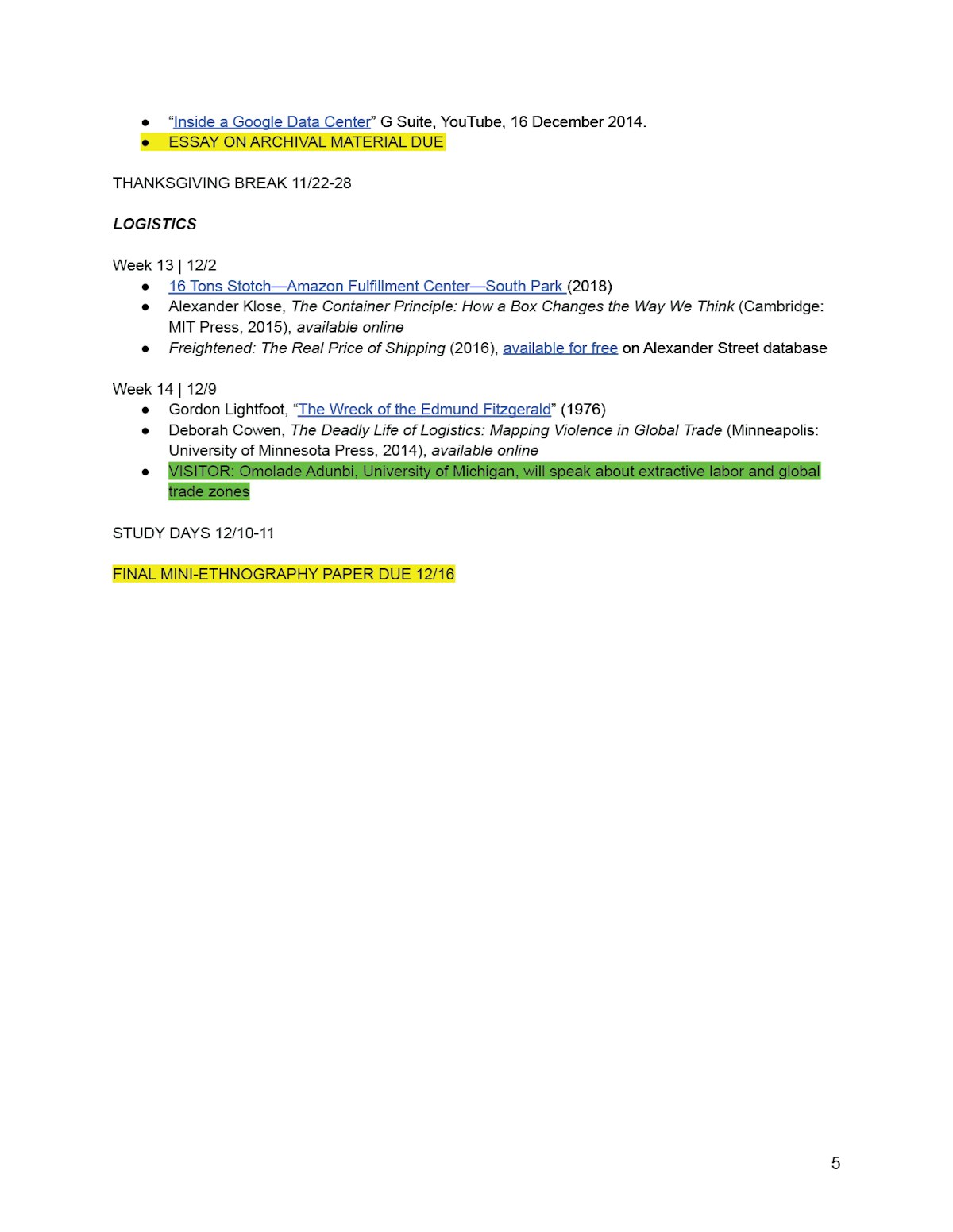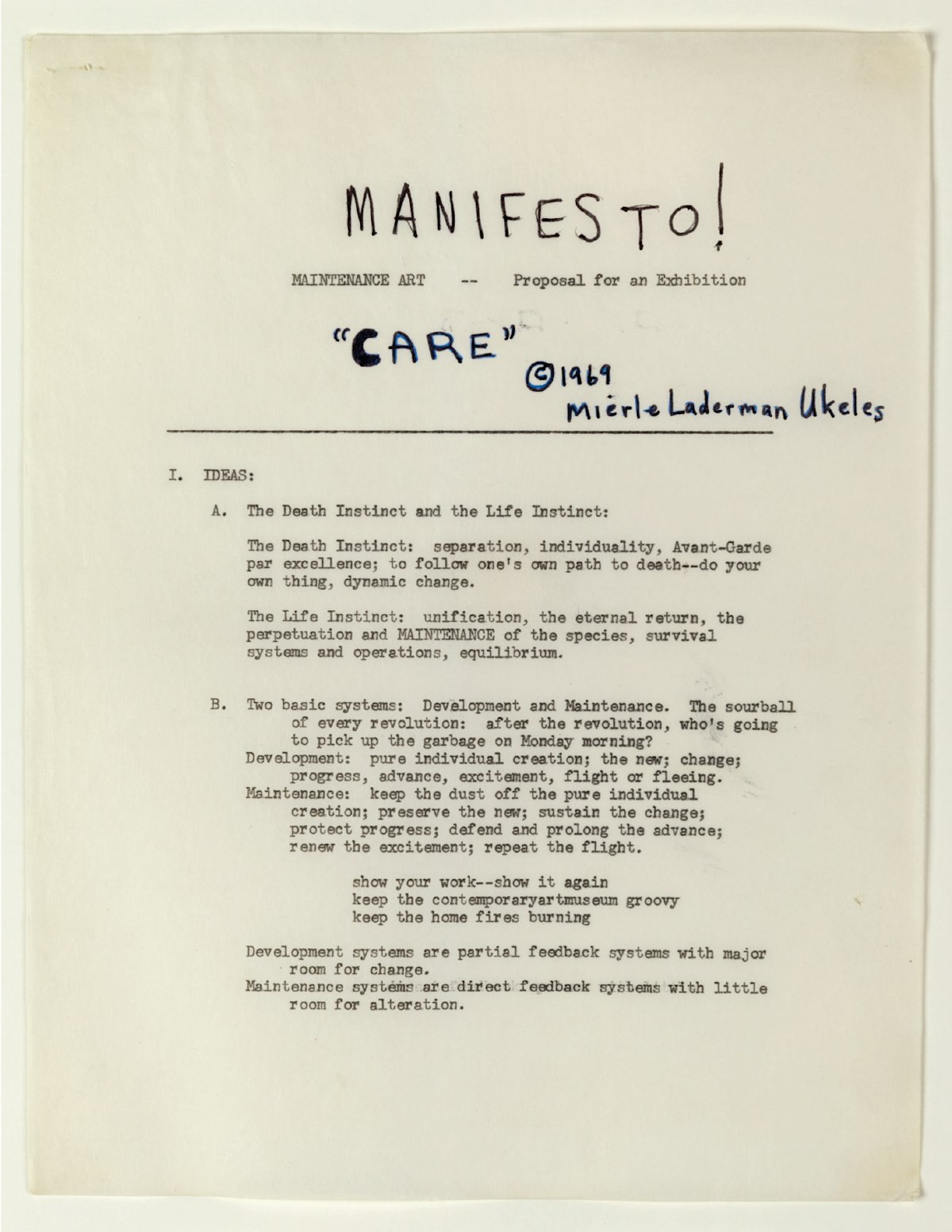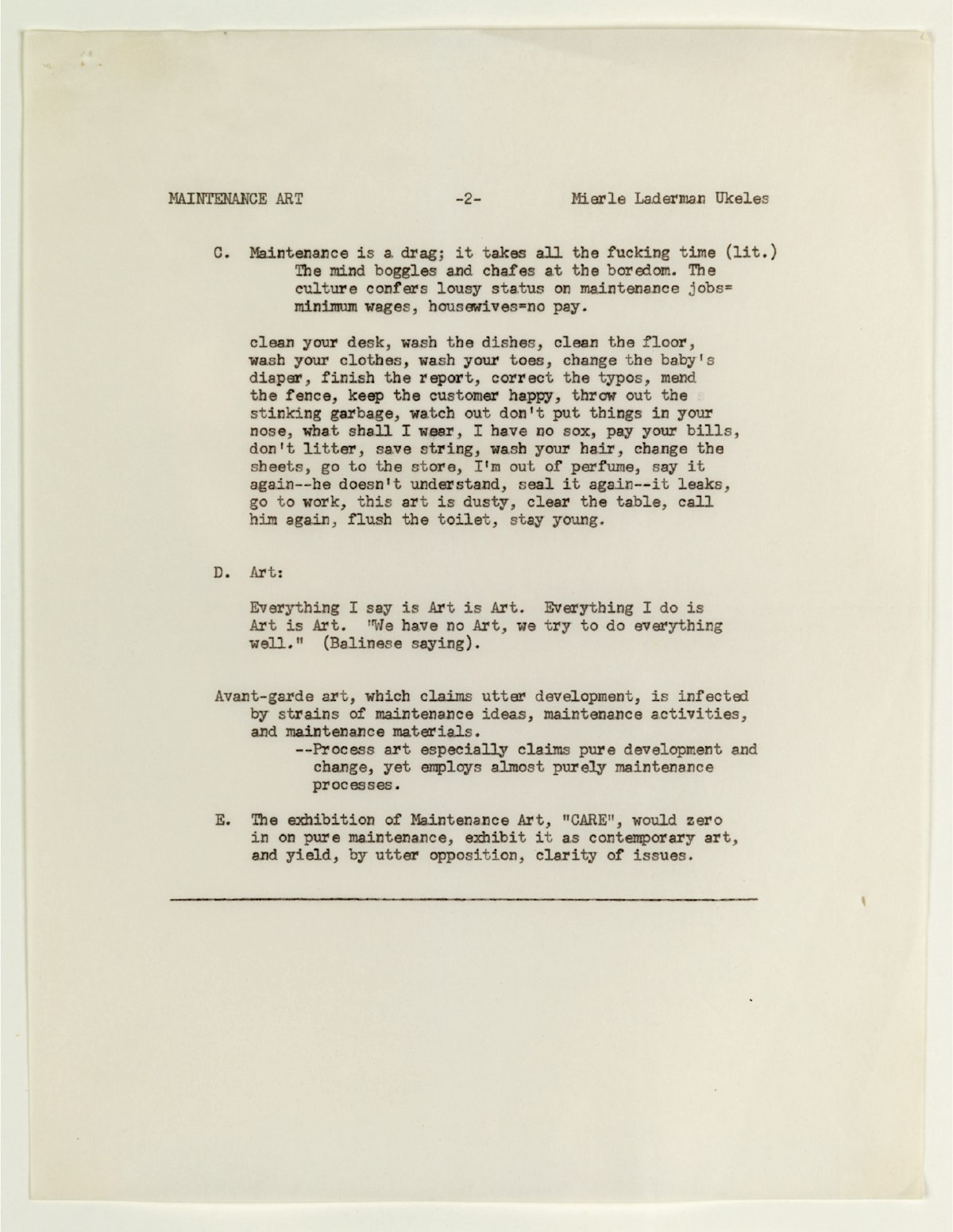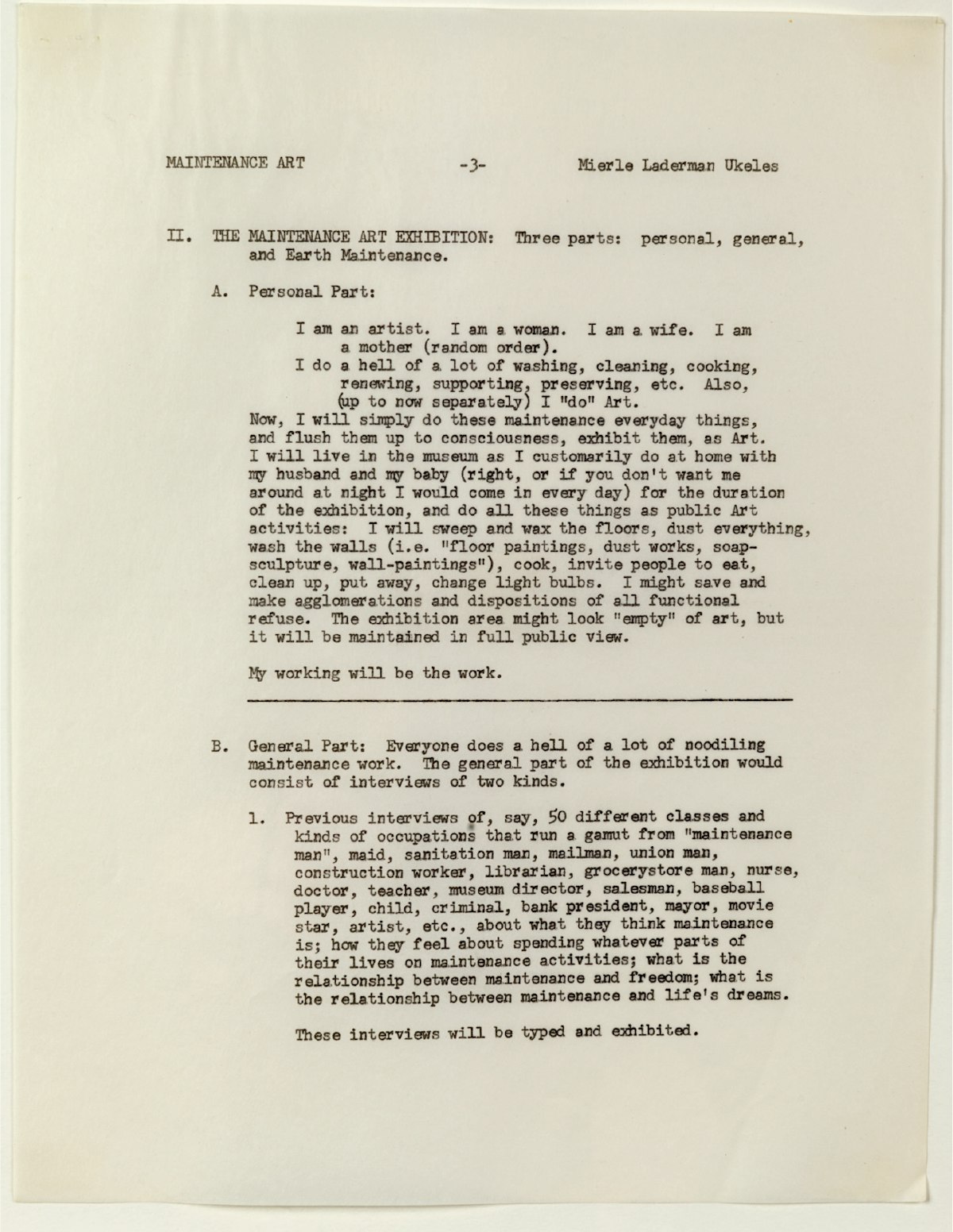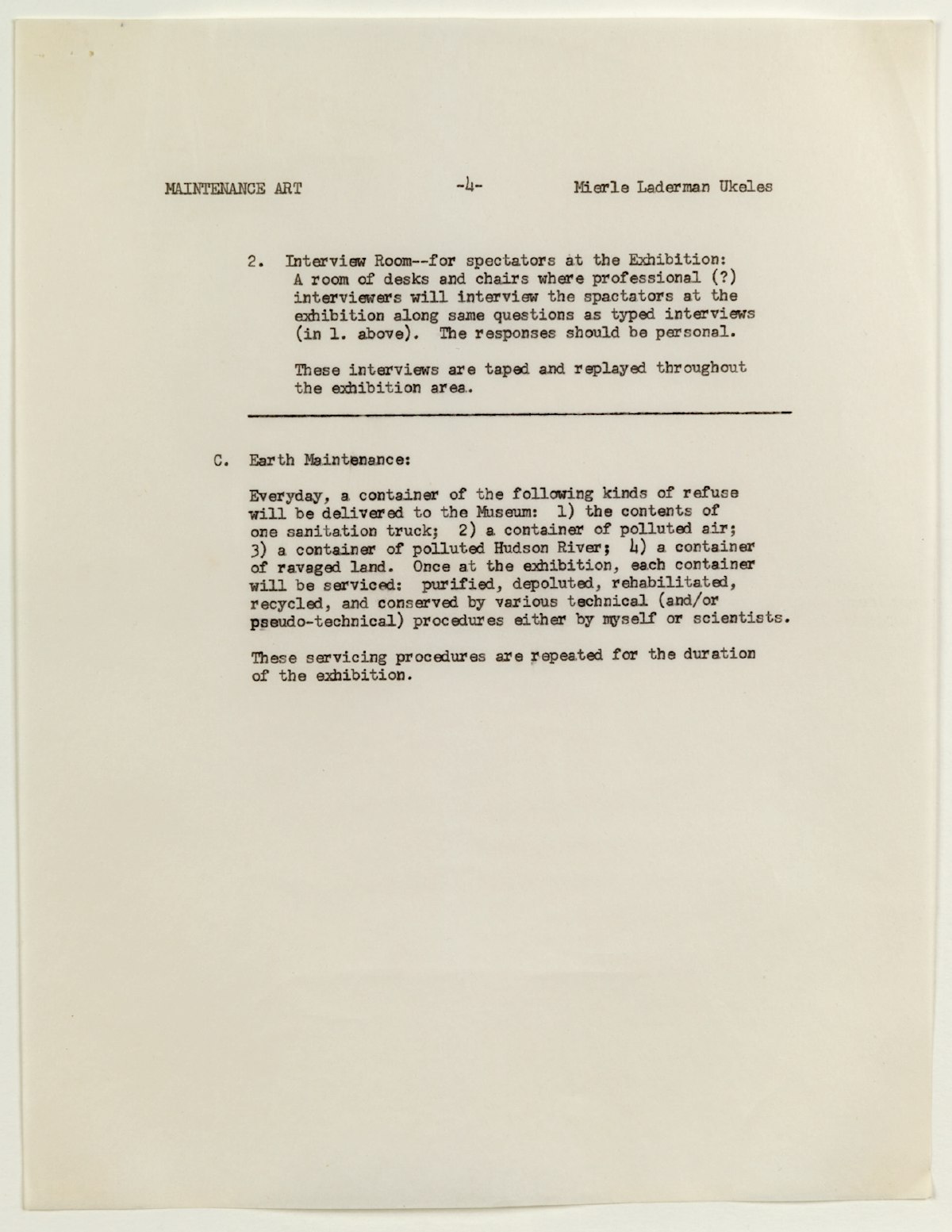Infrastructure is a hot-button political issue. But can it also be an important pedagogical opportunity? Why should we teach courses on infrastructure and how should we do it? What do design students in particular gain when they engage with infrastructures?
In fall 2022, I taught a graduate seminar “Infrastructure and Power.” In part, the course emerged from my book research on concrete and the US empire. But it also emerged from my reaction to the global COVID pandemic and the Black Lives Matter movement. It was clear that emergency infrastructure, including food, medical care, and housing, was sustained by some people and not others. While many of us worked from home, other bodies, often low-income and people of color, had to expose their bodies to the risk of a deadly infectious disease. Activists staged “die-ins” in public squares, on roads, and other forms of infrastructure to address the racialization of particular bodies, or what Ruth Wilson Gilmore termed “premature death.”[1] Clearly, infrastructure and concrete mattered not only for the circulation of go ods and people, but also for pause and stasis.
Why study infrastructures now? In addition to the abovementioned social movements, we are grappling with the Anthropocene. We now know that the human, the anthropos, has been for the first time in history, the principal agent for affecting environmental change. Through our aggressive extraction and consumption, we have diminished the ozone layer, melted ice caps, emitted exorbitant levels of CO2, created millions of tons of waste, racialized populations, and engaged in other practices that put us on a path toward extinction. But this catastrophic period has also led to some innovative insights, including increased attentiveness to our relationality to non-human historical agents, from animals and natural landscapes to the built environment itself. Infrastructure is yet another key agent we know little about because we have presumed it to be an object made by humans for humans. But what if we used the broader ethos of relationality to rethink infrastructures? How might these new revelations inform our conversations about the Anthropocene?
Reading infrastructure requires an interdisciplinary toolkit of concepts, languages, and techniques. I assigned readings that cover the fields of design, urbanism, science and technology, environmental studies, anthropology, and history. This is crucial because infrastructure is at once a physical project as well as a technical, scientific, social, aesthetic, metaphorical, and representational one. This is not to say that infrastructure is everything. It is to emphasize that infrastructure is not a thing but a process. A process about clarifying our relationship to other types of beings, social structures, systems, and environments. My course does not intend to equip students with an answer for how to build better infrastructures or even critique existing infrastructures. It instead expands students’ understanding of what infrastructure is in the first place, and empowers them to ask what it could be.
In addition to academic and public-facing texts, I assigned a musical playlist and several films that showed how infrastructures are negotiated not only in boardrooms and governmental offices but also in popular culture. Eddy Grant in “Electric Avenue” (1982) explained what it’s like to live in a powerless (pun intended) neighborhood, while in “Internet Connection” MIA conveyed the sonic breaks in dialup connection issues. South Park’s interpretation of Tennessee Ernie Ford’s “16 Tons” (1955) in the context of backbreaking Amazon labor reminds us that history does not repeat but echo itself. Drawing continuities between coal and warehouse work suggests that extraction from the human body persists and continues to connect people to physical infrastructures.
The first several meetings centered on definitions and promises of infrastructure. By reading canonical texts on infrastructure written by Susan Leigh Star and Brian Larkin, we discussed how technologies turn into systems and then coalesce into infrastructures.[2] We posited whether infrastructure must always take a physical and material shape, i.e. highways, roads, and buildings, or whether it can remain more abstract and exist as social systems. Students asked, is infrastructure something that is produced by humans alone?
Theoretical discussions on reading infrastructure necessarily included decentering the human as a key category of analysis and instead thinking more broadly of the body as infrastructure. We listened to music and watched clips of Charlie Chaplin’s Modern Times (1936) to understand how bodies become machine hybrids, or what Donna Haraway described as “cyborgs.”[3] Understanding ourselves as part of infrastructural systems allows us to see and enact greater relationality and kinship between our bodies, the bodies of highways, animals, and other agents in the environment.
If a greater awareness of relationality equips us with multispecies empathy, it must also challenge us to grapple with the historical injustices that infrastructural projects have and continue to enact upon communities of color. At Michigan, with two recent water crises in Flint and Detroit, we are all too familiar with how white-majority governments are keen to cut costs, even if it means exposing people to premature death. But the roots of these issues are much deeper. Indeed, infrastructure is a historical project that requires that we understand how race shaped what was built and where, whose priorities were addressed, and whose emergencies were ignored. In addition to addressing these historical injustices, planning for new infrastructure must acknowledge our current limitations and reliance on racial capitalism. As anthropologist Akhil Gupta noted, infrastructure is never finished and is always in ruins.[4]
Maintenance, as a job, as a service business, as a care practice, as a political movement, was another key theme in the course. We discussed what counts as maintenance, who performs the labor of maintenance, when and where. We watched the House in the Middle (1953) film about the moral and nuclear perils of neglect, and discussed Mierle Laderman Ukeles’ Maintenance Art Manifesto (1969). Are we closer to figuring out who will pick up trash after the revolution is over? Two visiting guest speakers, Lee Vinsel and Cynthia Torres, spoke to us about the paradox of innovation and custodial labor. We asked, if infrastructure is made invisible, who and why makes maintenance invisible? Whose bodies are exposed to dust, darkness, chemicals, and third shifts? How does a language of care transform discussions about infrastructure? We discussed how maintenance itself entails complex politics. After all, maintenance is about maintaining the status quo not only physically but also socially and politically. We must therefore adopt what Christopher Henke and Benjamin Sims described as a reflexive repair framework that allows us to account for and anticipate our own inevitable cultural and political failures.[5]
Another important thread throughout the course examined the materiality of digital networks. In other words, systems that appear to exist in clouds and other immaterial spaces are always rooted in invisible yet very material infrastructures. For example, internet servers take up hundreds of squares of space and tasks like cleaning the internet of inappropriate content is typically accomplished not by algorithms but by workers in the Global South. We often discuss the sanitary or sustainable city, but how about the sanitary digital world? Is the invisibility of digital cleaners different from the invisibility of other types of maintainers? What is the emotional, physical and psychological toll that these workers experience? Turns out that clean streets as well as clean digital networks rely upon the invisible and displaced labor of marginalized peoples.
The course included three assignments that culminated with a final mini-ethnography. The first asked them to engage with an in-person, virtual, or pre-recorded public meeting that discussed an infrastructural issue or project of their choice. The second assignment involved selecting a primary document about the infrastructural object. And, finally, the mini-ethnography asked students to weave together their knowledge of the site along with its history, representation in popular culture, and contemporary politics. The final assignment asked students to employ their bodies and personal experiences, theoretical and historical texts to unpack the many layered meanings of infrastructure.
Teaching a course on infrastructure and power is challenging because it demands us to let go of conventional ideas about progress and instead grapple with the persistent and permanent brokenness of our worlds. Narratives about progress and improvement must give way to practices of care and repair, social and technological systems, and political infrastructures. Infrastructure and power therefore describes not only the challenge of identifying who makes decisions about what and where, but also the question of how communities and societies can discover and pave new forms of collective being on this planet.
